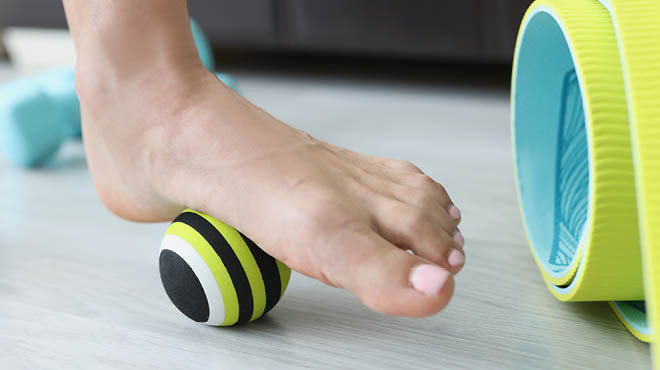“My heel is killing me!” is without a doubt one of the most common sentences uttered in podiatry offices worldwide. Heel pain can range from slightly uncomfortable to utterly debilitating. Most often, it’s caused by plantar fasciitis.
The plantar fascia is a band of tissue extending from the heel to the ball of the foot. Plantar fasciitis is caused by excessive stress, which brings on inflammation and, typically, heel pain.
Plantar fasciitis can affect anyone. However, it’s most common in middle-aged, active adults. Other risk factors include obesity, occupations that require you to be on your feet all day and flat feet or high arches.
The primary signs of plantar fasciitis include excruciating heel pain when you take your first steps in the morning, recurring pain when standing up from a seated position and pain associated with standing for a long time.
The great news about plantar fasciitis is that it’s highly treatable. Early detection makes the condition more manageable and prevents further complications. If left untreated, plantar fasciitis can lead to various problems caused by compensating for the discomfort, including knee, hip and back pain.
Nonsurgical treatment often has satisfactory results and includes:
Rest
Pain is the body’s way of warning you something is wrong. Listen to your body and avoid activities that make the pain worse, such as running, hiking or dancing.
Stretching
Your podiatrist will give you a list of stretches that reduce tension on the plantar fascia and help with healing. Tight calf muscles often play a role in heel pain.
Ice
Place ice on the heel for 20 minutes, three to four times a day. Ice therapy is a wonderful way to decrease inflammation and manage pain.
Medication
Pain relievers, such as ibuprofen and naproxen, can help decrease inflammation and speed healing.
Night splint
These sock-like wraps with built-in supports help stretch the plantar fascia while you’re sleeping or resting. A splint can help alleviate pain experienced with those first few steps in the morning.
Orthotics and shoes
Adequate arch support is essential when treating plantar fasciitis. Discuss with your podiatrist whether over-the-counter or custom orthotic inserts are right for you. In addition, avoid going barefoot and choose supportive, hard-soled shoes, such as sneakers.
Surgical treatment isn’t recommended often and is reserved for those not responding to conservative treatment. To prevent recurrence of plantar fasciitis, stretch properly before exercising and wear supportive shoes if you’ll be on your feet for a long time.
Stephanie Kvas, D.P.M., is a podiatrist in New Prague and Waseca, Minnesota.





